Fast Facts
- When: September 2025
- Where: Bethpage Black Course, Farmingdale, New York, USA
- Watch: Sky Sports
- Official Website: Ryder Cup
The Ryder Cup is a very exclusive tournament that is held biennially between the USA and Europe. One of the most unique features to the event is that it’s one of very few team events that professional golfers can partake in throughout their career. Attendance in the tournament is said to be one of the pinnacles of a golfers career.
The 45th Ryder Cup in September 2025 will be hosted by the United States, held on the Black Course on at Bethpage State Park in New York.
Interest in the Ryder Cup is huge and extends beyond golf’s usual group of fans. As a result, we’ll no doubt have plenty of offers on the outright markets nearer the start of the tournament.
Existing Customer Free Bets & Money Back Offers
Please Note: This event has now ended.
Stats Articles
Event Stats
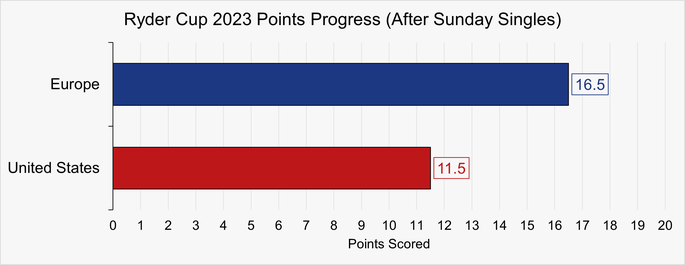
Last 10 Ryder Cup Winners – 2004 to 2023
| Year | Winner | Score | Location |
|---|---|---|---|
| 2023 | Europe | 16 ½ – 11 ½ | Marco Simone Golf Club (Italy) |
| 2021 | USA | 19 – 9 | Whistling Straits, Wisconsin (USA) |
| 2018 | Europe | 17 ½- 10 ½ | Le Golf National (France) |
| 2016 | USA | 17-11 | Hazeltine National Golf Club (USA) |
| 2014 | Europe | 16 ½ – 11 ½ | Gleneagles (Scotland) |
| 2012 | Europe | 14 ½ – 13 ½ | Medinah Country Club (USA) |
| 2010 | Europe | 14 ½ – 13 ½ | Celtic Manor (Wales) |
| 2008 | USA | 16 ½ – 11 ½ | Valhalla Golf Club (USA) |
| 2006 | Europe | 18 ½ – 9 ½ | The K Club (Ireland) |
| 2004 | Europe | 18 ½ – 9 ½ | Oakland Hills Golf Club (USA) |
Schedule
- Day 1 – Friday 29th September 2023
- Morning – 4 x foursome matches
- Afternoon – 4 x fourball matches
- Day 2 – Saturday 30th September 2023
- Morning – 4 x foursome matches
- Afternoon – 4 x fourball matches
- Day 3 – Sunday 1st October 2023
- 12 x single matches
Day 1 Foursome Tee Times (Friday 29th September 2023)
| Match | Start | Europe | United States |
|---|---|---|---|
| 1 | 06:35 | Jon Rahm & Tyrrell Hatton | Scottie Scheffler & Sam Burns |
| 2 | 06:50 | Viktor Hovland & Ludvig Aberg | Brian Harman & Max Homa |
| 3 | 07:05 | Shane Lowry & Sepp Straka | Rickie Fowler & Collin Morikawa |
| 4 | 07:20 | Rory McIlroy & Tommy Fleetwood | Xander Schauffele & Patrick Cantlay |
Europe won this session 4 – 0
Day 1 Fourball Tee Times (Friday 29th September 2023)
| Match | Start | Europe | United States |
|---|---|---|---|
| 1 | 11:25 | Viktor Hovland & Tyrrell Hatton | Justin Thomas & Jordan Spieth |
| 2 | 11:40 | Jon Rahm & Nicolai Hojgaard | Scottie Scheffler & Brooks Koepka |
| 3 | 11:55 | Robert MacIntyre & Justin Rose | Max Homa & Wyndham Clark |
| 4 | 12:10 | Rory McIlroy & Matt Fitzpatrick | Collin Morikawa & Xander Schauffele |
Europe won this session 2 ½ – 1 ½
Day 2 Foursome Tee Times (Saturday 30th September 2023)
| Match | Start | Europe | United States |
|---|---|---|---|
| 1 | 06:35 | Rory McIlroy & Tommy Fleetwood | Justin Thomas & Jordan Spieth |
| 2 | 06:50 | Viktor Hovland & Ludvig Aberg | Scottie Scheffler & Brooks Koepka |
| 3 | 07:05 | Shane Lowry & Sepp Straka | Max Homa & Brian Harman |
| 4 | 07:20 | Jon Rahm & Tyrrell Hatton | Patrick Cantlay & Xander Schauffele |
Europe won this session 3 – 1
Day 2 Fourball Tee Times (Saturday 30th September 2023)
| Match | Start | Europe | United States |
|---|---|---|---|
| 1 | 11:25 | Viktor Hovland & Ludvig Aberg | Sam Burns & Collin Morikawa |
| 2 | 11:40 | Tommy Fleetwood & Nicolai Hojgaard | Max Homa & Brian Harman |
| 3 | 11:55 | Justin Rose & Robert MacIntyre | Justin Thomas & Jordan Spieth |
| 4 | 12:10 | Matt Fitzpatrick & Rory McIlroy | Patrick Cantlay & Wyndham Clark |
United won this session 3 – 1
Day 3 Singles Tee Times (Saturday 1st October 2023)
| Match | Start | Europe | United States |
|---|---|---|---|
| 1 | 10:35 | Jon Rahm | Scottie Scheffler |
| 2 | 10:47 | Viktor Hovland | Collin Morikawa |
| 3 | 10:59 | Justin Rose | Patrick Cantlay |
| 4 | 11:11 | Rory McIlroy | Sam Burns |
| 5 | 11:23 | Matt Fitzpatrick | Max Homa |
| 6 | 11:35 | Tyrrell Hatton | Brian Harman |
| 7 | 11:47 | Ludvig Aberg | Brooks Koepka |
| 8 | 11:59 | Sepp Straka | Justin Thomas |
| 9 | 12:11 | Nicolai Hojgaard | Xander Schauffele |
| 10 | 12:23 | Shane Lowry | Jordan Spieth |
| 11 | 12:35 | Tommy Fleetwood | Rickie Fowler |
| 12 | 12:47 | Robert MacIntyre | Wyndham Clark |
this session was tied 6 – 6
About The Ryder Cup
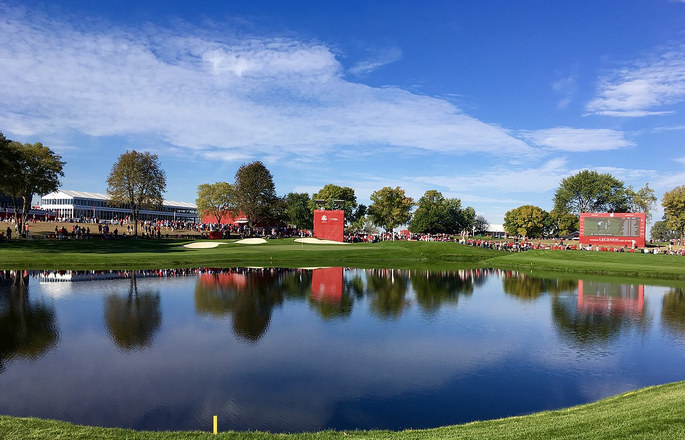
The Ryder Cup is held every two years and alternates between courses from within the USA and Europe. In the USA each course can propose to host the Ryder Cup up to seven years in advance, before the PGA of America then decide which course to choose.
In Europe, due to the sheer number of countries involved, it works a little differently. Each course can propose to host the event within a country and then it’s up to that country’s golfing governing body to select who will be their overall representative for that year.
Once this has been conducted, each country will go to a vote, which is held by Ryder Cup Europe and this ultimately decides the course and country which will host the tournament. What’s been encouraging for both Europe and the event over the last few years is the number of lesser countries within the golfing community that have applied. Some of these include Austria, Denmark, Germany, Italy, Portugal, Spain and Turkey, allowing the Ryder Cup to reach a new audience outside of England, Wales, Scotland and Ireland, where the majority of past events have been held.
The Matchplay Format
The nature of the Ryder Cup remained largely unchanged from 1927 until 1963, at which point it was decided that a third day should be added to proceedings. In 1969 things changed further when the teams were increased from ten to twelve, then in 1979 the format was changed once more in order to see four foursome and four fourball matches played on day one and day two. That was also the year that the rules were changed in order to limit players to five matches, having been allowed to play six from 1963 to 1975.
Ryder Cup Format Changes
| Years | Days Played | Foursomes | Fourballs | Singles | Total Points |
|---|---|---|---|---|---|
| 1927 – 1959 | 2 | 4 | 0 | 8 | 12 |
| 1961 | 2 | 8 | 0 | 16 | 24 |
| 1963 – 1975 | 3 | 8 | 8 | 16 | 32 |
| 1977 | 3 | 5 | 5 | 10 | 20 |
| 1979 – Present | 3 | 8 | 8 | 12 | 28 |
Captaincy & Team Selection
The manner in which players have been selected to play in the Ryder Cup has also changed over the years, with the Americans and Europeans using different methods to pick their teams. Typically, both teams have nine players selected according to their World Ranking, with a further three ‘Wild Cards’ selected by the captain. The manner in which these captain’s picks are chosen is different for Europe and the US, with the US also extending their Wild Cards to four for the 2016 Ryder Cup. Once the teams are chosen, it is then the responsibility of the captain to choose the playing order for each of the formats played over the weekend. They present their order ‘blind’ to what the other team is doing with their order. Since 1965 the captains have not played in the tournament.
Full tables of all Ryder Cup captains are shown below.
Ryder Cup Captains – 1979 to 2023
| Year | USA Captain | European Captain |
|---|---|---|
| 2023 | Zach Johnson | Luke Donald |
| 2021 | Steve Stricker | Padraig Harrington |
| 2018 | Jim Furyk | Thomas Bjorn |
| 2016 | Davis Love III | Darren Clarke |
| 2014 | Tom Watson | Paul McGinley |
| 2012 | Davis Love III | Jose Maria Olazabal |
| 2010 | Corey Pavin | Colin Montgomerie |
| 2008 | Paul Azinger | Nick Faldo |
| 2006 | Tom Lehman | Ian Woosnam |
| 2004 | Hal Sutton | Bernard Langer |
| 2002 | Curtis Strange | Sam Torrance |
| 1999 | Ben Crenshaw | Mark James |
| 1997 | Tom Kite | Seve Ballesteros |
| 1995 | Lanny Wadkins | Bernard Gallacher |
| 1993 | Tom Watson | Bernard Gallacher |
| 1991 | Dave Stockton | Bernard Gallacher |
| 1989 | Raymond Floyd | Tony Jacklin |
| 1987 | Jack Nicklaus | Tony Jacklin |
| 1985 | Lee Trevino | Tony Jacklin |
| 1983 | Jack Nicklaus | Tony Jacklin |
| 1981 | Dave Marr | John Jacobs |
| 1979 | Billy Caspar | John Jacobs |
Ryder Cup Captains – 1973 to 1977
| Year | USA Captain | Great Britain & Ireland Captain |
|---|---|---|
| 1977 | Dow Finsterwald | Brian Huggett |
| 1975 | Arnold Palmer | Bernard Hunt |
| 1973 | Jack Burke Jr | Bernard Hunt |
Ryder Cup Captains – 1927 to 1971
| Year | USA Captain | Great Britain Captain |
|---|---|---|
| 1971 | Jay Hebert | Eric Brown |
| 1969 | Sam Snead | Eric Brown |
| 1967 | Ben Hogan | Dai Rees |
| 1965 | Byron Nelson | Harry Weetman |
| 1963 | Arnold Palmer | John Fallon |
| 1961 | Jerry Barber | Dai Rees |
| 1959 | Sam Snead | Dai Rees |
| 1957 | Jack Burke Jr | Dai Rees |
| 1955 | Chick Harbert | Dai Rees |
| 1953 | Lloyd Mangrum | Henry Cotton |
| 1951 | Sam Snead | Arthur Lacey |
| 1949 | Ben Hogan | Charles Whitcombe |
| 1947 | Ben Hogan | Henry Cotton |
| 1937 | Walter Hagan | Charles Whitcombe |
| 1935 | Walter Hagan | John Henry Taylor |
| 1933 | Walter Hagan | John Henry Taylor |
| 1931 | Walter Hagan | Charles Whitcombe |
| 1929 | Walter Hagan | George Duncan |
| 1927 | Walter Hagen | Ted Ray |
The History of The Ryder Cup
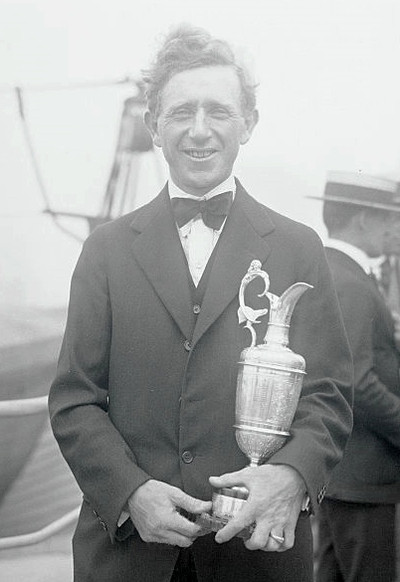
Though the first official Ryder Cup took place in 1927, the idea of some sort of golf tournament between the United States and Britain dates back a little bit further. In September of 1920 there was a letter written by the magazine ‘Golf Illustrated’ to the Professional Golfers’ Association of America that suggested America send a group of between twelve and twenty professional golfers to Britain to take part in the following year’s British Open. The magazine was willing to fund the expenses of the players, with the hope being that an American would be able to win the competition for the first time since it had been created.
The American Professional Golfers’ Association liked the idea and it was officially announced in the November edition of Golf Illustrated that year. The idea behind the ‘British Open Championship Fund’ was solidified over the following months, resulting in a team of twelve being chosen in time for them to make it to Gleneagles for the Glasgow Herald 1000 Guinea Tournament, which was a warm-up event two weeks before to the British Open was due to start at St. Andrews. The PGA President George Sargent and PGA Secretary Alec Pirie, along with the Vice-President of the United States Golfers Association Robert Gardner, selected the team of twelve golfers who would travel.
The Gleneagles International Match: 6th June 1921
The Times wrote a report on the seventeenth of May that suggested there would be an international match between American and British professionals. As it happened, Harry Hampton had not travelled with the rest of the American team and Jim Barnes was indisposed, so it was decided that ten Americans would take on ten British golfers the day before the 1000 Guinea Tournament was due to start at Gleneagles. The morning session consisted of five foursomes, with the afternoon seeing ten singles matches taking place. The British team won nine matches, with the Americans winning three and three others being halved.
Gleneagles International Match 1921 Full Result
| USA Team | British Team | |||
|---|---|---|---|---|
| Player | Points | Player | Points | |
| Foursomes | Jock Hutchison & Walter Hagan |
0 | George Duncan & Abe Mitchell |
0 |
| Emmet French & Tom Kerrigan |
0 | Harry Vardon & Ted Ray |
1 | |
| Fred McLeod & Clarence Hackney |
0 | John Henry Taylor & James Braid |
0 | |
| George Mclean & Wilfrid Reid |
0 | James Ockenden & Arthur Havers |
1 | |
| Charles Hoffner & William Earl ‘Bill’ Mehlhorn |
0 | James George Sherlock & Josh Taylor |
1 | |
| Singles | Jock Hutchison | 0 | George Duncan | 1 |
| Walter Hagan | 0 | Abe Mitchell | 0 | |
| Emmet French | 1 | Ted Ray | 0 | |
| Fred McLeod | 1 | John Henry Taylor | 0 | |
| Tom Kerrigan | 0 | Harry Vardon | 1 | |
| Clarence Hackney | 0 | James Braid | 1 | |
| Wilfrid Reid | 1 | Arthur Havers | 0 | |
| George McLean | 0 | James Ochenden | 1 | |
| Charles Hoffner | 0 | James George Sherlock | 1 | |
| Bill Mehlhorn | 0 | Josh Taylor | 1 | |
| Total | 3 | 9 | ||
The Duchess of Atholl presented each player with a Gold medal at the event’s conclusion, with one side featuring crossed flags of the Union Jack and the Stars and Stripes and the other the words ‘America v Britain. First international golf match at “The Glasgow Herald” tournament, Gleneagles, 6 June 1921’. The side with the flags also boasted the words ‘For Britain’ or ‘For America’ depending on which team member they were presented to. Though the American’s lost the Ryder Cup, Jock Hutchison won the British Open and thereby achieved the country’s aim of winning the competition for the first time. There was a similar competition between American and British Amateur golfers played at Royal Liverpool in Hoylake in 1921, leading to the creation of the Walker Cup.
The Unofficial Ryder Cup at Wentworth: 4th – 5th June 1926
It was not unusual in the 1920s for small groups of professionals to travel to different countries in order to take part in its national championship, yet in 1926 a larger group of Americans than normal headed to Britain to take part in that year’s British Open. It was decided that Walter Hagen would pick three other American pros to go up against four British players in a competitive match before the Open got underway. The initial idea was that it would be a stroke play competition that saw the eight golfers go head-to-head over eighteen holes. In April a ‘golfing enthusiast’ named Samuel Ryder announced that he would present a trophy annually to the winners of a competition between American and British professional golfers.
By May the competition had been altered to involve two teams of eight playing foursomes on the first day and eight singles on the second. Hagen then requested that it be teams of ten instead, which was accepted. Samuel Ryder and his brother James had sponsored numerous tournaments for British professionals, so it was clear that they would be allowed to run the event as they saw fit. The British team won 13-1, with one match being halved.

However, there was a general strike on that year and uncertainty surrounded how many Americans would actually travel to take part in the tournament, resulting in Samuel Ryder deciding to hold back the issuing of what Golf Illustrated had referred to as the ‘Ryder Cup’ until the following year.
The First Ryder Cup, Worcester Country Club: 3rd – 4th June 1927
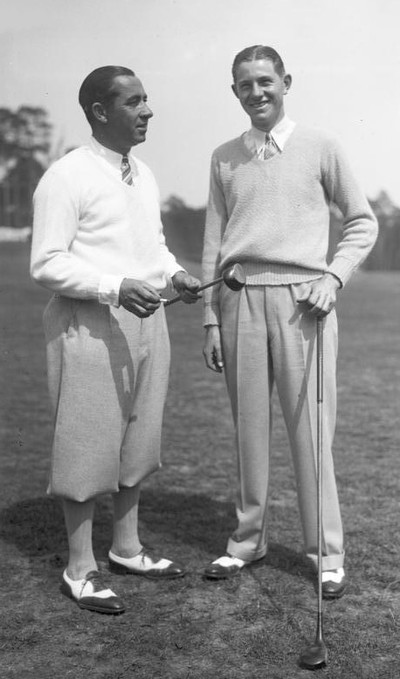
The general strike of 1926 combined with the fact that Walter Hagen rather than the PGA had picked the American team led many to declare that the 1926 result didn’t count. On top of all of that, the American team hadn’t had time to practice, which was something that they would alter for the following year. By 1927 the rules and regulations of the contest had become much more official, with a ‘Deed of Trust’ being drawn up for that year’s Ryder Cup. Golf Illustrated launched a fund in Britain to help send the troop of British professionals over to America to take part in the tournament, with Samuel Ryder himself making up the £300 shortfall when the fund couldn’t hit its £3,000 target.
The American PGA initiated an unofficial rule that golfers competing for the US team had to have been born in the country. This didn’t limit the Americans in any way, however, with Walter Hagen’s team running out 9 1/2 – 2 1/2 winners at the Worcester Country Club in Massachusetts. The plan was to host a return version of the tournament the following year, but it soon became obvious that holding the contest on an annual basis was too much. As a result, it was decided to move the follow-up to 1929 and then play it biannually from then on. From 1929 onwards, the Deed of Trust was altered and required all players to have been born in the country that represented, as well as to be members of their country’s Professional Golfers’ Association.
Widening of the Selection Field to Include Europe in 1979
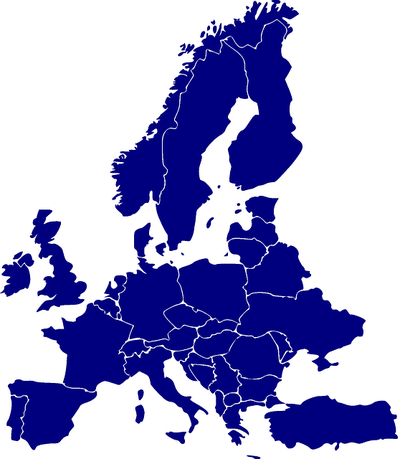
The American victory in 1927 was a sign of things to come. For the next four outings of the Ryder Cup the host nation lifted the trophy, but in the final tournament before the Second World War the Americans won 8-4 at Southport and Ainsdale Golf Club. When hostilities on the course resumed after hostilities off it had ended, the Americans crushed the British 11-1 at Portland Golf Club in 1947. They then won the next four Ryder Cups, regardless of where in the world the tournament took place. In fact, the British team didn’t win again until their 7 1/2 – 4 1/2 victory in 1957. Even that was a blip, however, with the US not losing any of the following thirteen Ryder Cup outings. The closest that the British team came to claiming victory was in 1969 when the teams were tied sixteen-all and the Americans retained the trophy.
As a result of this American dominance it was decided that the British team, which had become Britain and Ireland in 1973 on account of the change of the political situation in the UK, should be expanded to include players from continental Europe. This was, at least in part, because of the new found dominance of Spanish players such as Seve Ballesteros and Antonio Garrido. It’s for that reason that many consider the history of the Ryder Cup to be split in half, based around the invitation of European players into the tournament from 1979 onwards. That the split in terms of wins since then has been so much more even suggests that the decision was the right one, with the Europeans winning eleven times since 1979 compared to America’s eight wins to date.
Noteworthy Ryder Cups
As you might imagine for a tournament that sees America and Europe do battle on the golf course, there have been a number of noteworthy Ryder Cups since the competition was formed officially in 1927. Here’s a look at the best of them:
Nicklaus vs Jacklin (1969)
Hosted at Royal Birkdale on Merseyside, the 1969 outing of the Ryder Cup is considered to be one of the most competitive in the tournament’s history. The US and Britain were tied 15 1/2 each as the last match made its way up the eighteenth. Jack Nicklaus had been 1 up over Tony Jacklin on the seventeenth but the British player made an Eagle to make it all-square. Both players hit the green of the par 5 eighteenth in two, with Nicklaus missing his Eagle putt by five foot and Jacklin missing his by two. Nicklaus sank his birdie and conceded Jacklin’s to give the players a half each and end the Ryder Cup sixteen-all. Nicklaus’s American colleagues weren’t impressed that he didn’t force Jacklin to make the putt, feeling that the British player might have missed and given them an outright win.
The Azinger and Ballesteros Rivalry (1989)
The Ryder Cup was already considered to be an intense rivalry between European and American golfers by the time the 1989 edition rolled around, but that went up a notch when a feud between Seve Ballesteros and Paul Azinger erupted at The Belfry, near Birmingham. The two were drawn to play singles against each other and early on in the match Ballesteros requested a change of scuffed ball. Azinger disputed whether it actually needed to be changed, leading a referee being called and siding with the American. Ballesteros then questioning whether or not Azinger had taken a legal drop on the eighteenth after he’d landed in the water. Whether mind games or genuine frustration from Ballesteros, the Americans could only muster a draw and the Europeans retained the cup.
The Rivalry Intensifies (1991)
If anyone had been hoping that the rivalry between the two players had subsided in the two years between Ryder Cups, they were soon disabused of that notion. Chip Beck and Paul Azinger were drawn to play against Seve Ballesteros and José María Olazábal in a foursome match, which requires the players on the same team to take alternate shots. As the match went on, the Americans inadvertently swapped balls, which is prohibited under the rules of golf. Ballesteros accused them of a violation, which led Azinger to declare that they weren’t ‘trying to cheat’. Ultimately the Europeans won 2&1 and it gave them a point that contributed to the Americans being just one up in the final match of the competition. Bernhard Langer needed to win his match to retain the cup, but missed his bogey putt after conceding that of Hale Irwin he was up against.
The Increase In Nationalism and The Battle of Brookline (1999)
As you’d expect from a tournament that pits two continents against each other, there had been an increasing sense of nationalism in the build-up to the 1999 Ryder Cup at Brookline, Massachusetts. This culminated in the American team celebrating wildly after Justin Leonard made a forty-five foot putt for a birdie on the seventeenth hold of his singles match against José María Olazábal. Given that Olazábal could still halve the hole if he made his putt, this was seen as ‘disgusting’ by the European team and they accused the Americans of walking all over the Spaniard’s line. It wasn’t just the American golfers behaving poorly, with reports emerging that one spectator had spat at Mark James’s wife, later leading to him referring to it as a ‘bear pit’.
The Miracle At Medinah (2012)
Perhaps the most exciting Ryder Cup to date occurred in 2012 when the European team found themselves 10-4 down after fourteen matches. With two four-balls still to conclude and twelve singles matches taking place the next day, there was little room for error for the European team. They ended day two 10-6 down, yet won eight and a half of the twelve points available in the singles matches, giving them a 14 1/2 to 13 1/2 win. The 2012 Ryder Cup became known as the Miracle of Medinah and cemented the notion of Ian Poulter being an exceptional Ryder Cup golfer. Despite never winning a Major, Poulter loved the tournament and won all four of the matches he played in that year.
Interesting facts
Phil Mickelson has played in the most events at twelve, one ahead of Nick Faldo on eleven. Sergio Garcia has the most winning points for his team with 28½, again ahead of Nick Faldo’s winning a record of 25 points. Sergio Garcia is also the youngest player to participate in the Ryder Cup, aged just nineteen years and two hundred and fifty-eight days when he took part. Raymond Floyd is the oldest player to date, aged fifty-one years and twenty days when he played. Here are some other good facts you might wish to know about:
- Six players have scored holes-in-one during the Ryder Cup, with five of them representing Europe and just one from the United States
- George Duncan’s 10&8 win over Walter Hagen in the singles match of 1929 is the widest margin of victory to date, achieved during the thirty-six hole era
- Ludvig Aberg and Viktor Hovland’s 9&7 win over Brooks Koepka and Scottie Scheffler is the widest margin of victory in an 18 hole match
- The 2001 Ryder Cup was postponed until 2002 following the September 11th attacks in New York. The Ryder Cup was hosted on even numbered years until the 2021 event when it switched back to odd years.
